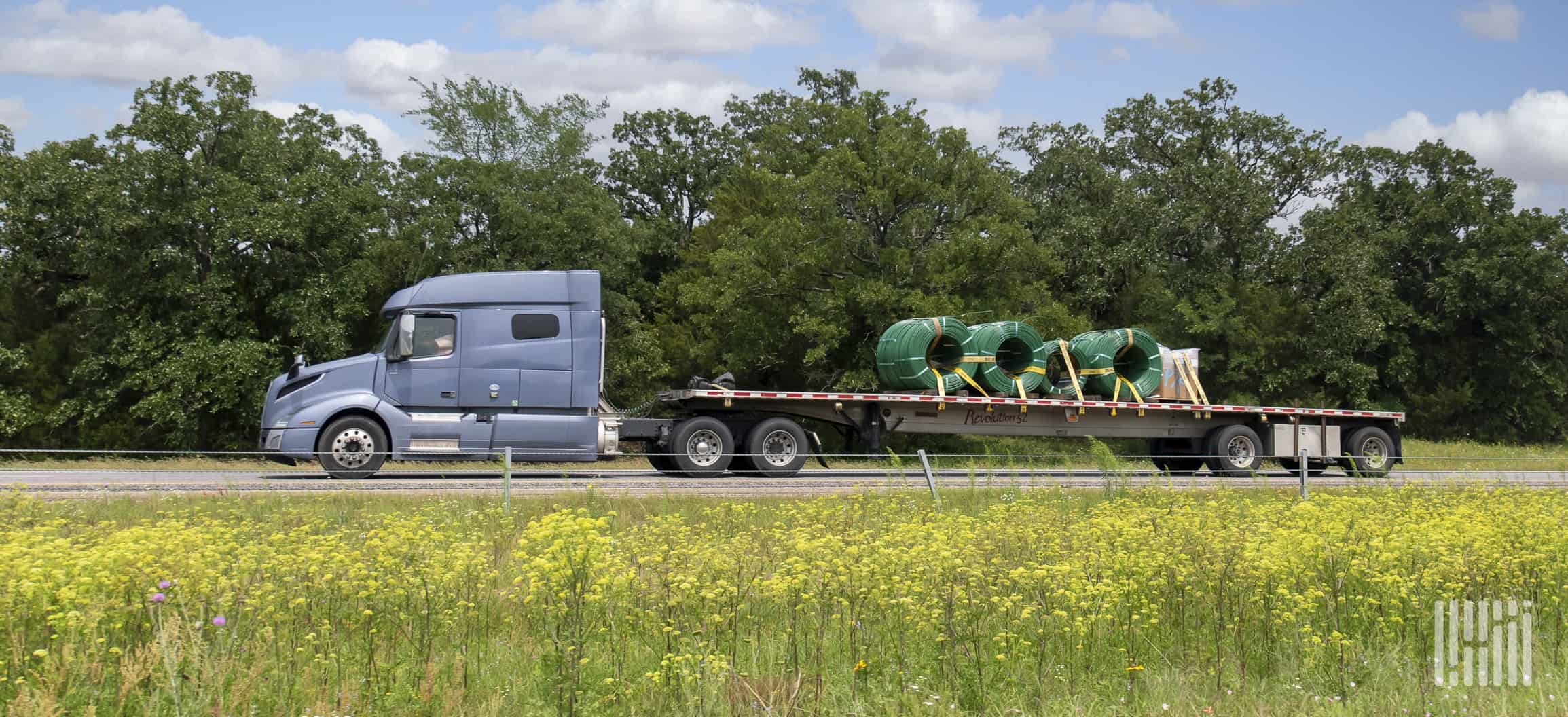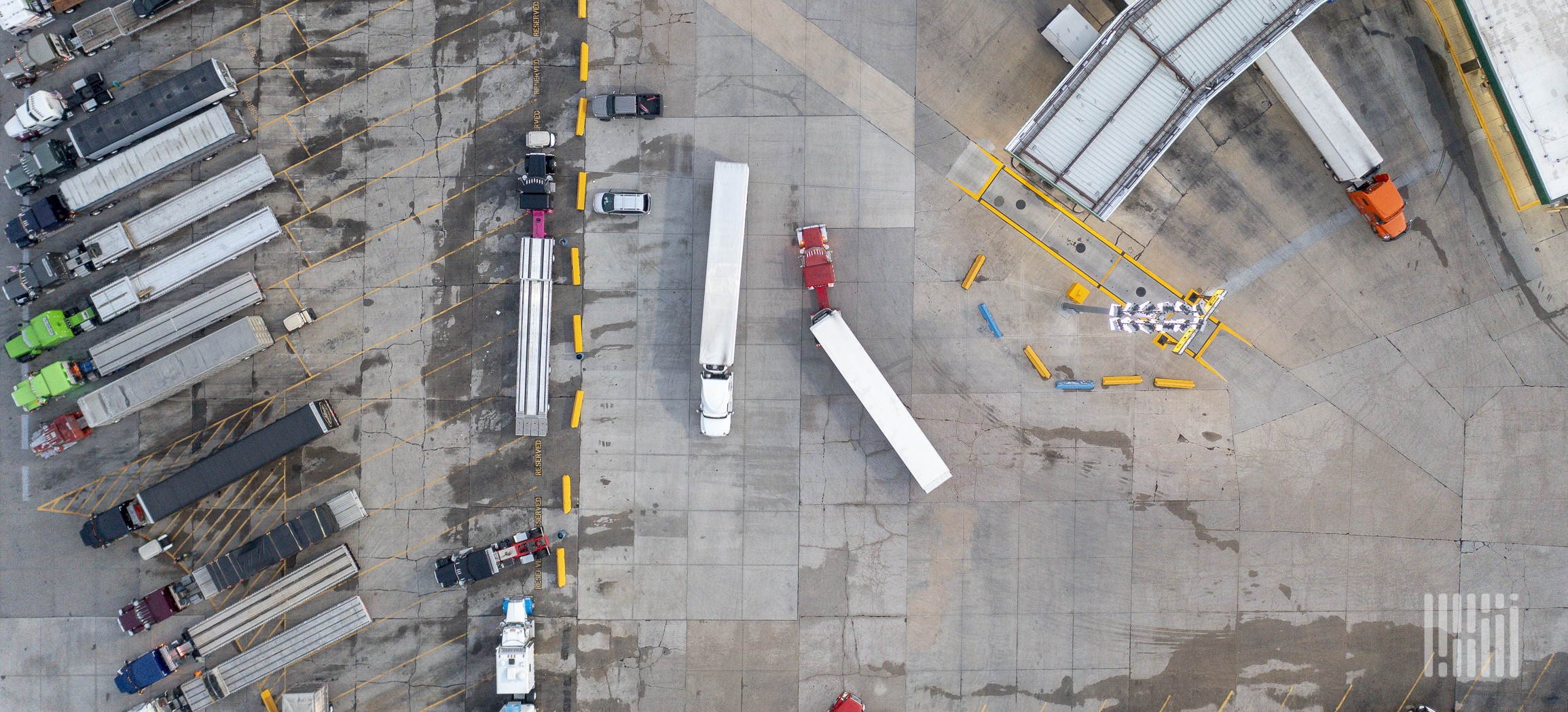Flatbed trucking offers unique challenges and opportunities for new drivers.
This article provides insights and tips for new drivers starting in flatbed trucking, including:
- Qualifications required
- Pros and cons of the job
- How to choose the best flatbed trucking companies
We’ll also answer frequently asked questions such as why flatbed trucking pays more and whether it is harder to learn for new drivers. Read on to learn more about this exciting and rewarding career path. And when you’re finished, check out the other articles in our ‘Insights and tips for new drivers’ series:
- What to expect as a new trucking company driver
- How to choose the best trucking company for new drivers
- Flatbed trucking insights for new drivers
- Pros and cons of OTR trucking jobs for new drivers
What is flatbed trucking?
Flatbed trucking is a transport method in which cargo is secured and transported on a flatbed trailer that’s hitched to a tractor. A flatbed trailer has no sides or roof, and the cargo is exposed to the elements during transport.
This method is commonly used to transport oversized or irregularly sized goods like:
- Heavy machinery
- Construction equipment
- Building materials
- Large vehicles
A flatbed truck can operate locally, regionally, or nationally, depending on the distance to be covered and type of cargo being transported.
Unique challenges for flatbed trucking
Some unique challenges for flatbed trucking include:
- Load security: Flatbed trailers are open and can carry large, bulky, and often irregularly shaped items. Drivers must ensure that cargo is loaded, secured, and properly balanced to avoid shifting or falling off the trailer.
- Weather conditions: Flatbed truck drivers can encounter adverse weather conditions, such as rain, snow, high winds, and extreme temperatures. They must anticipate and adjust their driving to ensure the cargo’s safety and prevent accidents.
- Height restrictions: Some states have cargo height restrictions for flatbed transport, to ensure they can pass beneath bridges, tunnels, and overpasses. Drivers must plan routes accordingly.
- Tarping: Some flatbed semi truck loads require tarping to protect the cargo from weather or debris during transport. Tarping can be time-consuming, physically demanding, and challenging in adverse weather conditions.
- Special permits: Oversized or overweight flatbed loads may require special permits from state transportation departments. Semitruck flatbed drivers must obtain them and comply with all restrictions and regulations to avoid fines, delays, or legal issues.
Flatbed trucker qualifications
To get started as a flatbed truck driver, you’ll need the following qualifications, skills and attributes.
Commercial Driver’s License (CDL)
To operate a flatbed truck, a driver must have a CDL with the appropriate endorsements. The specific type of endorsement may vary depending on the weight and type of cargo being hauled.
Experience
Because flatbed trucking is more dangerous than other truck driving jobs, employers typically require two years of truck driving experience. You’ll also need a clean driving record.
Physical fitness
Flatbed truckers must have the strength to load and secure cargo, and the endurance to handle long driving hours.
Safety knowledge
Drivers must be knowledgeable about current state and federal laws governing trucking, especially regarding cargo securement and weight restrictions.
Mechanical skills
Flatbed truckers should have basic mechanical skills to perform routine maintenance and minor repairs on vehicles when needed.
Communication skills
Good communication skills are essential for flatbed truckers to be able to interact effectively with shippers, receivers, and other truck drivers.
Time management
Flatbed truckers must be able to manage their time effectively to meet delivery deadlines and maintain a consistent schedule.
Attention to detail
A flatbed trucker must ensure that cargo is properly secured and relevant documentation is in order before starting a trip.
Flatbed trucking pros and cons for inexperienced drivers
Drivers should consider the following advantages and disadvantages of flatbed truck driving before accepting a job.
Pros
- Opportunity to learn specialized skills: Flatbed trucking requires specialized skills such as load securement and tarping, which can provide valuable experience for new drivers.
- Higher pay potential: Flatbed trucking tends to pay more than other types of trucking due to the increased skills required.
- Varied work environments: Flatbed trucking may take drivers to a variety of locations, as opposed to just driving on highways.
Cons
- Physical demands: Flatbed trucking can be physically demanding, especially when it comes to loading and unloading freight, tarping loads, and strapping cargo.
- Increased risk: With flatbed trucking, the cargo is exposed to the elements, which can increase the risk of damage in bad weather conditions. There is also an increased risk of injury from working with heavy loads and equipment.
- Additional equipment requirements: Flatbed trucks require specialized equipment for securement and tarping. These items may be costly to purchase and maintain.
Choosing the best flatbed trucking company
When you make the decision to become a flatbed trucker, the next step is deciding who to work for. Here are some important aspects to consider.
- Company reviews: Research prospective employers online. Check their website, social media pages, and online reviews from current and former employees. Try to get an idea of the company culture, benefits, and any potential red flags.
- Pay rates: Compare pay rates for flatbed truck loads among different companies to identify the ones offering the most competitive pay and benefits.
- Equipment: Look for companies that have a well-maintained and up-to-date fleet of trucks, trailers, and equipment.
- Safety record: Make sure the company adheres to safety regulations and has a good safety record.
- Routes: Look for companies that offer the types of routes you prefer to drive, such as local, regional, or long-haul.
- Communication: Flatbed trucking companies for new drivers should be responsive to your calls and emails.
- Training and support: Look for a company that provides ongoing training, safety programs, and support to help you succeed.
By considering these factors when shopping for a flatbed trucking company, you can find one that is a good fit for your needs and preferences.
FAQ
There can be some potential challenges associated with flatbed loads for owner operators, such as load securement and managing a larger and more difficult-to-maneuver vehicle. Flatbed truck drivers also typically deal with different types of freight, which may require specialized skills and equipment. Compared to other types of trucking, flatbedding may involve more physical labor and exposure to weather elements.
Driving a flatbed truck may pay more as it requires more skills, driver qualifications and experience than driving a regular truck. Flatbed truck drivers need to have knowledge of load securement and have to be able to safely secure their cargo on the flatbed. They also have to take extra precautions while driving since the cargo on the flatbed is exposed to external factors like wind and rain.
A flatbed truck is a type of vehicle with a flat, level “bed” or platform with no sides or roof, which is used for transporting heavy or bulky goods. Due to its design, it allows for easy loading and unloading from all sides and can carry a variety of goods, from construction equipment to oversized items that wouldn’t fit in a closed body truck.




